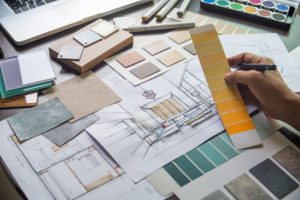 The architecture industry has changed a lot over the years, influenced by new technology and changing social needs. After many distinct styles, contemporary architecture is now leading the way, continually exploring new possibilities. This shift in design is key to shaping our surroundings, responding to the demand for buildings that are sustainable, efficient, and visually appealing.
The architecture industry has changed a lot over the years, influenced by new technology and changing social needs. After many distinct styles, contemporary architecture is now leading the way, continually exploring new possibilities. This shift in design is key to shaping our surroundings, responding to the demand for buildings that are sustainable, efficient, and visually appealing.
Modern firms are shaping environments that support both communities and the planet, blending tradition with innovation. Leading in urban design, sustainability, and digital integration, they are transforming urban spaces and designing adaptable, eco-friendly buildings. These efforts address current needs while paving the way for resilient, sustainable developments that will influence architecture for years to come.
Redefining Urban Terrain
Architectural firms are changing our cities by balancing looks, function, and sustainability. With growing populations and environmental issues, cities need designs that go beyond the usual. The best Los Angeles architect firm professionals, for instance, are creating spaces that blend natural elements, support urban biodiversity, and use energy efficiently. Examples include green rooftops, shared public areas, and buildings that enhance their surroundings while promoting sustainability.
The challenge is doing all this without losing the appeal or practicality of urban spaces. By using modern technology and sustainability, firms are raising the bar in architecture. This approach meets city needs while fostering a sense of community and connection. Architectural firms are not just building structures; they’re shaping the future of urban living.
Sustainability at the Forefront
In recent years, architects have focused more on sustainability, using eco-friendly practices and materials to create greener, more efficient buildings. With growing climate concerns, they’ve turned to renewable resources like bamboo, reclaimed wood, and recycled steel. These materials lower carbon footprints and add a unique touch to modern designs.
Features like rainwater harvesting, solar panels, and passive solar design are now common, highlighting a commitment to reducing environmental impact. Architects are also improving energy efficiency by designing buildings that maximize natural light and ventilation, cutting down on artificial heating and cooling. While sustainable designs may cost more upfront, the long-term savings and environmental benefits often make them worth it.
Digital Design and Technological Integration
The integration of digital design and technology is reshaping architecture, allowing for more innovative and creative solutions. Architects are now using advanced digital tools to visualize and manage complex designs with greater accuracy. These tools, like 3D modeling and simulations, help bring concepts to life before construction begins, improving both creativity and efficiency, and saving time and money.
From virtual reality walkthroughs to software that provides real-time project updates, digital design enhances collaboration and ensures everyone shares the same vision. Even during construction, technologies like drones and smart building systems boost accuracy and streamline the process. This shift is leading to more sustainable and adaptable architectural practices.
Blending Tradition with Modernity
Architectural firms are merging tradition with modern design, striking a balance between cultural heritage and contemporary aesthetics. This approach blends historical elements with modern innovations, honoring craftsmanship and authenticity while introducing new forms and spatial experiences. For instance, a historic building’s exterior might retain its original facade, while the interior is transformed with sleek, modern designs that cater to today’s needs.
The goal is to merge these styles seamlessly, preserving cultural identity without compromising functionality. Supporters view this method as a bridge between the past and future, adding depth and character to urban environments. Critics argue it can weaken the purity of each style, but when executed with care, it enriches the architectural scene, creating timeless, multi-generational spaces.
Adaptive and Responsive Architectural Designs
In today’s architecture, adaptive and flexible designs have become key in creating spaces that can change to meet users’ needs. Architectural firms are focusing on designing environments that aren’t limited to a single purpose but can easily transform to stay functional. These spaces often use modular elements, movable walls, or multi-purpose furniture, allowing for quick adjustments to suit various social, professional, or personal needs.
This flexibility adds depth to the design, enhancing the user’s experience and making the space an active part of daily life. While some see this approach as promoting freedom and creativity, others worry about the complexity and cost. Still, as our needs grow more complex, these adaptive designs offer practical solutions, making them important in modern architecture.
The progress of architecture reflects a growing focus on sustainability, adaptability, and technological innovation. As contemporary firms blend tradition with cutting-edge design, they are reshaping urban terrain and creating more flexible, eco-friendly buildings. By integrating digital tools and sustainable materials, these firms improve both efficiency and creativity, addressing the pressing needs of cities and the environment. The balance between honoring cultural heritage and pushing the boundaries of modern design fosters a richer architectural scene. As the industry moves forward, these innovative approaches will continue to shape the future of architecture, offering lasting solutions for generations to come.


